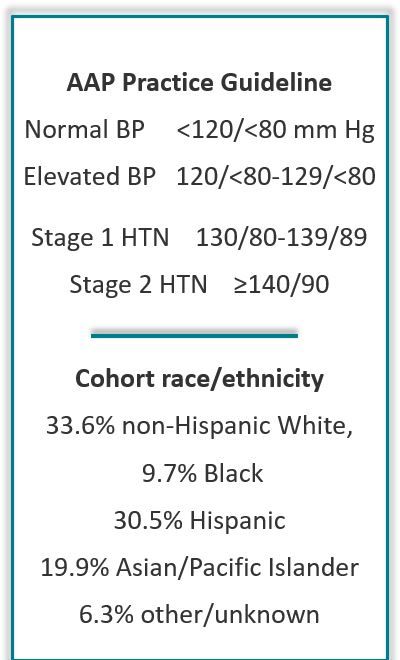- CDC
- Heart Failure
- Cardiovascular Clinical Consult
- Adult Immunization
- Hepatic Disease
- Rare Disorders
- Pediatric Immunization
- Implementing The Topcon Ocular Telehealth Platform
- Weight Management
- Monkeypox
- Guidelines
- Men's Health
- Psychiatry
- Allergy
- Nutrition
- Women's Health
- Cardiology
- Substance Use
- Pediatrics
- Kidney Disease
- Genetics
- Complimentary & Alternative Medicine
- Dermatology
- Endocrinology
- Oral Medicine
- Otorhinolaryngologic Diseases
- Pain
- Gastrointestinal Disorders
- Geriatrics
- Infection
- Musculoskeletal Disorders
- Obesity
- Rheumatology
- Technology
- Cancer
- Nephrology
- Anemia
- Neurology
- Pulmonology
Common Menstrual Disorders Increase Risk for Future CVD in Young Women
Polycystic ovary syndrome and dysmenorrhea were both identified as reproductive disorders that could help stratify CVD risk in women.
Two common menstrual cycle disorders may place women of childbearing age at increased risk of future cardiovascular disease according to research presented in a late-breaking science session at the American Heart Association Scientific Sessions 2023, November 10-13, 2023, in Philadelphia, PA.
©Rytis/stock.adobe.com

In separate studies, investigators found the prevalence of hypertension was nearly 3 times greater among adolescent women with polycystic ovary syndrome (PCOS)1 and that women with dysmenorrhea were twice as likely to experience ischemic heart disease as those without the condition.2
The findings from both studies add to the evidence of cardiovascular risks that are unique to women and could be used to help stratify risk and provide early intervention, Harmony Reynolds, MD, chair of the American Heart Association’s Committee on Cardiovascular Disease and Stroke in Women and Underrepresented Populations, observed in an AHA press statement.3
Hypertension risk in adolescent women with PCOS1
While the association of PCOS and hypertension in adult women is recognized, fewer studies have investigated the relationship among adolescents. Understanding BP as it relates to PCOS status before adulthood, wrote Sherry Zhang, MD, of where, and colleagues, would help support early CV risk surveillance.
To examine the prevalence of BP in hypertension range (BP-HTN) in adolescent women with and without PCOS and to assess any association between BP-HTN and PCOS, Zhang and team analyzed data from an existing cohort of 171 855 young women (aged 13 to 17 years) from Kaiser Permanente Northern California with a well-child visit between 2012 to 2018. They classified hypertension based on the 2017 American Academy of Pediatrics Practice Guideline (see figure) and presence of PCOS was based on clinical diagnosis within 1 year of the well-child visit. Standard body mass index (BMI) percentile data were used to classify participants as of healthy weight, overweight, moderate, and severe obesity.

Investigators compared differences in BP according to PCOS (n-1142) and no PCOS (n=167 651) and used multivariable logistic regression to assess the association of PCOS and HTN-BP.
Results
The final cohort numbered 168 793 participants; Zhang et al reported 65.9% had healthy weight, 18.7% were classified as overweight, and 15.4% classified as having obesity. BP data obtained at the well-child visit showed that BP was normal among 75.6%, 17.5% had elevated BP, and 7.0% had HTN-BP (6.1% Stage 1, 0.9% Stage 2).
The prevalence of HTN-BP was much higher for participants diagnosed with PCOS vs those without PCOS (18.6% vs 6.9%, P<.001), according to the study abstract. After multivariable adjustment for age, race/ethnicity, and BMI level, having PCOS was associated with 1.3-fold greater odds of HTN-BP (aOR 1.3, CI 1.1-1.5) than not having the disorder. The odds were similarly greater for young women with obesity (aOR 1.3, CI 1.1-1.6).
“Future studies should examine persistent HTN and the independent association of PCOS and HTN severity in this high-risk population,” the authors concluded.
Risk of ischemic heart disease in women with dysmenorrhea2
Increases in incident ischemic heart disease in younger persons is a result of suboptimal primary prevention, wrote study authors led by Eugenia Alleva, MD, MS, a postdoctoral research fellow at the Windreich Department of Artificial Intelligence and Human Health and the Hasso Plattner Institute for Digital Health at Mount Sinai in New York City. Underestimation of risk may be a contributing factor they add. The increase in IHD is more pronounced among young women and may be linked to the tendency to overlook more nontraditional risk factors for cardiovascular disease, such as stress and risk factors unique to women. A missed opportunity for risk stratification.
There is little research on the contribution of dysmenorrhea to CVD risk, the team wrote, despite the fact that it is the most prevalent menstrual complaint and associated with increased stress and autonomic dysfunction.
To add to the knowledge base, Alleva and colleagues tapped the Mount Sinai data warehouse and created a cohort of 30 554 women with dysmenorrhea and 25 350 controls. After full propensity score matching on demographic and clinical covariates, they used weighted logistic regression with IHD before age 50 years as a binary outcome. The team used separate regression models to investigate IHD subtypes (angina, acute myocardial infarction [AMI], AMI complications, chronic IHD).
As additional covariates in the models, they evaluated the inclusion of menstrual abnormalities (MA) and endometriosis, compared with other covariates only, according to the abstract.
Results
Alleva et al reported that dysmenorrhea was associated with a significant increase in the odds ratio (OR) for overall IHD (OR 2.08; 95% CI 1.5-2.8; P<.001), as well as for angina (OR 1.90, 95% CI 0.9-3.9; P<.08) and chronic IHD (OR 2.07, 95% CI 1.3-3.2; P<.001). The greater odds were independent from MA or endometriosis.
The concluded, “Dysmenorrhea might be an important risk factor for early IHD. The risk appears to be largest for angina and chronic IHD. Further research can investigate dysmenorrhea as a predictor of future IHD risk.”
References
